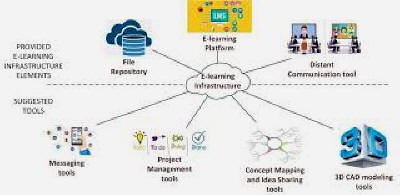Technological Infrastructure of E-learning
E-learning requires a solid technological base including simple learning management systems, user-friendly digital devices, and consistent internet access . The Moodle-based Aules platform was essential during the Spanish epidemic. By facilitating real-time cooperation and smooth access to instructional resources, it gave elementary school through high school pupils a structured and user-friendly environment.

Challenge - Nonetheless, the digital gap remains a major obstacle in the contemporary world.The abrupt switch to online education in Romania exposed issues with accessibility and preparedness. According to studies, less than 10% of pupils and just 17% of teachers used online learning resources before the outbreak (Ionescu et al., 2020).
Solutions to bridge the online learning gap
- Invest in inclusive and scalable technologies for example The Euro 200 program in Romania.
- leveraging advanced technologies like augmented reality and artificial intelligence, which offer personalized and interactive information.
- Improve user experience (UX) design in e-learning systems to guarantee accessibility and engagement.
- Establish infrastructure and trustworthy technical assistance to handle any issue.